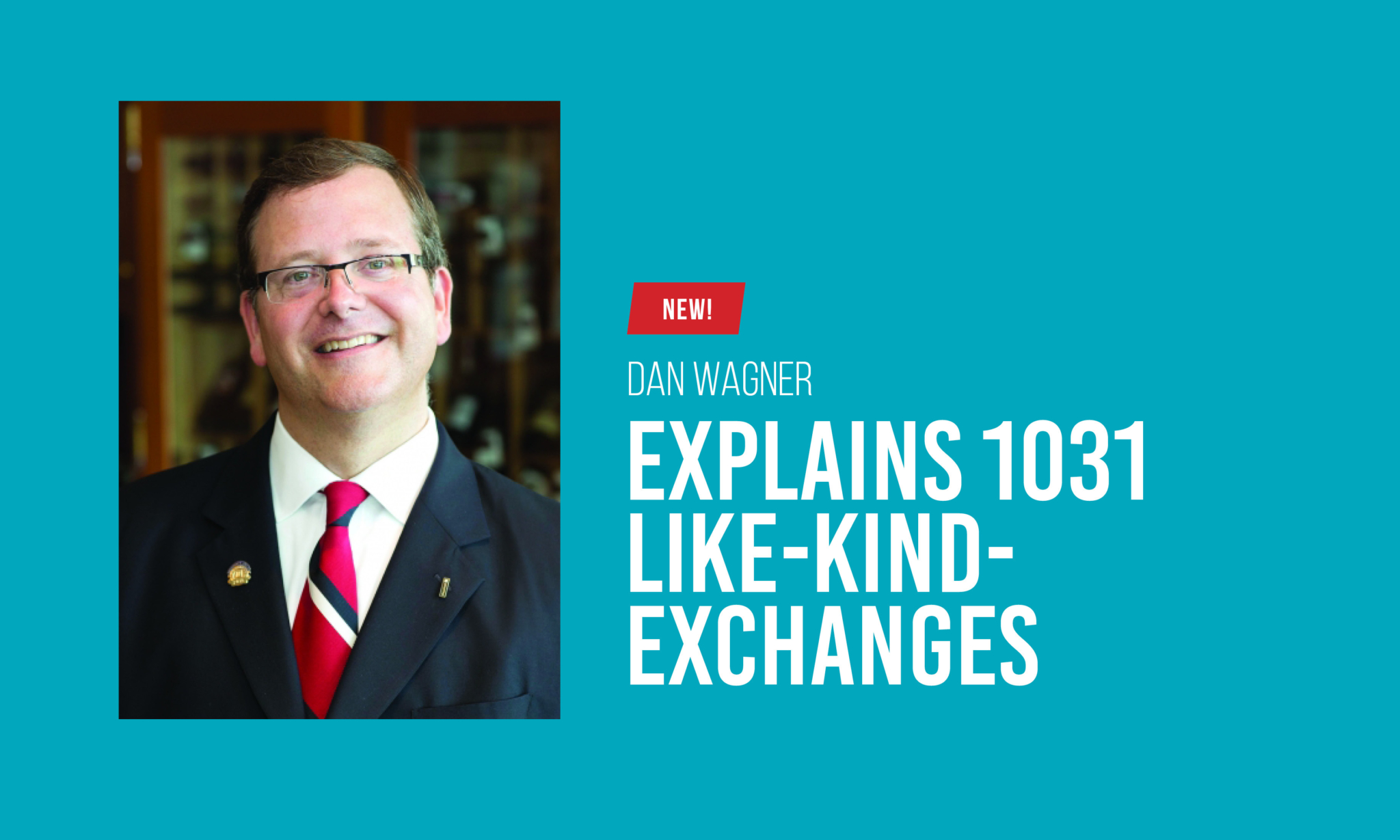
By Dan Wagner, Senior Vice President of The Inland Real Estate Group
There is a misconception that Internal Revenue Code Section 1031 like-kind-exchanges are a tool for the rich to dodge real-estate taxes. This notion twists and contorts the true, progressive goal of the tax code to help middle-class Americans build personal savings and ensure income for the future. In many ways, 1031 like-kind-exchanges are actually analogous with 401(k)s or Roth IRA accounts.
As with tax deferred retirement accounts, like-kind exchanges allow real estate owners to reinvest their profits from the sale of income producing properties into other similar income producing properties and defer – not dodge – the taxes. When the owner eventually liquidates the investment, the government collects its rightfully due taxes.
For example, a widow in Southern California was forced to sell her husband’s auto service business when he passed away. The real estate portion of the business formed a large percentage of the sale, and by using a like-kind exchange to defer the capital gains, she now receives monthly cash flow from rental income at the replacement properties she purchased. The subsequent property effectively has become her IRA account, providing her a nest egg to collect retirement income.
Like retirement accounts, the like-kind-exchange has helped Main Street Americans establish and increase their wealth, and it has also provided unprecedented economic growth for our economy over the last 100 years. In fact, except for some geographic differences, more than half of all 1031 exchanges are under $500,000, not much larger than the average value of a middle-class house or the average 401(k) balance of an investor nearing retirement.
Very little privately owned real estate is held in IRAs or 401(k) plans, with roughly $30 trillion in IRA or 401(k) accounts, less than 2 percent is invested in real estate and most of that is concentrated in publicly traded REITS.
Like-kind-exchange represents one of real estate’s only tax deferral mechanisms. If 1031 exchanges were not available, an owner’s only similar option is a self-directed retirement account which does not apply to real estate owners who have built their living through personal sweat equity, because an IRA and 401(k) owned property cannot be improved by the account owner.
How do 1031 like-kind-exchanges work? How do they help average Americans build family savings and ensure future income? One of the most effective ways to explain the why’s and how’s is to look at real life examples from main street investors.
Example #1
A husband and wife in their mid-70’s live in North San Diego County in a middle-class neighborhood. They are both retired – he was a plumber and she was a schoolteacher. Their modest home is paid for, and the couple has a son in his early 50’s with mild learning and social disability issues who still lives at home.
Over their years of working, the couple saved enough money to purchase a small apartment complex, which they manage themselves and use to generate supplemental income. In planning their estate, it was apparent that the son might not be suited to manage the residential complex.
To ensure their son’s financial future, the couple used a 1031 exchange to divest their actively managed rental real estate and reinvest in a partial interest in a Delaware Statutory Trust (DST) holding a professionally managed larger property.
The value of their other insurance, annuities, home and the DST asset would provide enough resources to supplement their son’s living needs for the remainder of his life.
Example #2
A widow and her family held a multifamily apartment complex in trust after the passing of her husband a decade ago. Now in a nursing home, the burden of managing the apartment complex falls on one adult child who lives nearby while the widow also needs money to meet her living expenses.
Using a like-kind-exchange, the family was able to sell the property and exchange into a DST portfolio. The family now has monthly cash flow, diversified portfolio of real estate and significantly less stress for the family as the burden of managing the apartment complex was lifted.
Example #3
A widow used a like-kind exchange to sell a duplex in Los Angeles and reinvest in a DST that holds a diverse portfolio of properties. The investment property had become a burden as she was unable to singlehandedly maintain the property or perform the required improvements.
Because of the 1031 option, she was able to take some proceeds from the sale to pay off personal debt and reinvest the balance of the proceeds turning a troubling financial situation into peace of mind for the rest of her retirement.
Example #4
A retired military veteran had been stationed in many states during his career. Over the years, he acquired five single family residences that he retained as rental income properties.
Due to the various locations of the properties, many management pressures and differing legal requirements for landlords state-by-state, the rental income properties became a great challenge to manage.
To provide a sound base for his retirement income, the veteran decided to sell all five rental income properties.
Through a like-kind-exchange, he was able to sell all the properties and exchange into fractional interests in several DST portfolios to ease the burdens of management and maintain cash flow in retirement.
If you are interested in learning more about how you can help preserve this very important part of our tax code, please go to www.1031.org.
